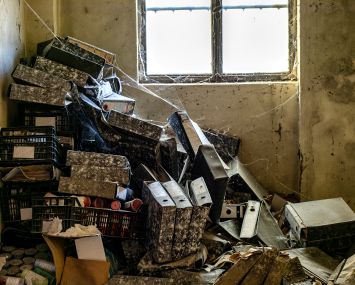Presented By: HqO
Tenant Engagement for the Modern Office Requires Building a Strong Community

Engaging with tenants during these challenging times often comes down to the “Four C’s,” according to Cushman & Wakefield Community Manager Cortney Haney: “Competition, convenience, community, and conscience.”
“As part of our community management, we want to make things convenient for tenants,” Haney said on a recent webinar. “We focus on bringing in things such as a shoeshine service, dry cleaning, and onsite dining, all kinds of things to make life/work balance a little more convenient.”
Haney shared her company’s focus on a November 4 webinar hosted by Commercial Observer Partner Insights, and presented by HqO, titled, “Engaging the Workplace: The Experiences and Tools that Drive Value for a Modern Workforce.”
The discussion featured insights from Haney; Tyler Kethcart, Vice President of Experience Management, JLL; and Alesia Sanganoo, Tenant Engagement Manager, Lincoln Property Company. The webinar was moderated by Courtney Eastes, Director of Customer Success, HqO.
Haney said that Cushman & Wakefield takes numerous steps to integrate their tenants with the communities around them.
“We have this new workforce that is a little more socially and eco-conscious, and we want to make sure we’re adhering to those values,” Haney said. “We want our tenants to be able to support the local community through events and programs that maybe support minority-owned businesses or local nonprofits. We run free libraries, and offer philanthropic programs throughout the year to try to achieve those goals.”
Kethcart expanded on the widespread advantages of integrating a company’s tenants with the local community.
“COVID has sped up the process of creating a virtual workforce, making that a requirement of the office experience,” Kethcart said. “I think the main reason we do it is to make sure tenants know what’s waiting for them when they come back. We’re proving to the tenants that we’re preparing programming. That’s where you really start to encourage tenants to want to return.”
Sanganoo said that Lincoln has made personal connections with their tenant base a priority throughout the COVID crisis to ensure that the relationships remain strong.
“Our buildings are not just physical spaces. They’re living, breathing communities,” Sanganoo said. “We stay engaged with our tenant base. We check in on them, ask them if they’re okay. I can’t tell you how many times we picked up the phone and checked on individual tenants. We’ve had happy hours to not only touch base with tenants about what is happening with COVID, but also just to ask if they’re okay.”
Sanganoo also develops fun events for the company’s tenants – such as a recent “fire drill” that concluded in a donut shop, where a wall of donuts awaited – by asking them about their favorite vendors.
“They tell me who they love and who they want in the building,” Sanganoo said. “Then, producing an event that they love makes them feel heard, connected, and attached to the building.”
“We have found that anything that involves food tends to be really popular,” Haney added. “Always go with the food.”
But community building efforts have not just been focused on the physical office. Haney has used social media to keep tenants apprised of happenings at the office.
“We’ve gone through two years of renovations here. Our building looks completely different than it did two years ago,” Haney said. “It’s been great to share that and to brag about all of our beautiful new spaces, but also for those who are still remote to be able to see what’s going on while they’re away, and to keep that connection. It’s always about the connection, of course.”
Kethcart noted that JLL has taken advantage of the trend toward work-from-home to create programming to keep people engaged with the workplace virtually as well.
“One of the interesting things that’s come out of the virtual side is that we’ve been able to do more family-focused programming,” Kethcart said. “We’ve created a standalone product focusing on all your things you can do with your kids at home. There are virtual museum tours and things we can offer that go beyond just the workforce.”
Sanganoo expanded on this, noting that some of her company’s programming is motivated by a more family-oriented perspective necessitated by the many changes brought about by COVID.
“We were pretty engaged with our tenants’ lives outside of their buildings, but being on Zoom calls and doing check-ins means seeing everybody’s kids, and having them meet our kids,” Sanganoo said. “We even see kids in the building, because some people have to bring their kids to work. COVID has completely changed the way that we do things, and the way we view connection. It’s imperative to understand the family aspect of that.”
Conversely, Sanganoo notes that office programming can serve as an important connection point for tenants who have had to endure the isolation of the COVID pandemic alone.
“I have to recognize that I was fortunate enough to go through this pandemic with family and friends. A lot of our tenants did not, and they needed to come into the office to feel connected,” Sanganoo said. “They needed those virtual happy hours that we hosted. They needed to be able for us to pick up the phone and check on them and ask how they’re doing. They really needed to feel a sense of community, now more than ever.”
In furthering these goals, Haney mentioned that Cushman & Wakefield’s use of the HqO app was also essential in fostering ongoing communications with tenants.
“It became a bit of a game changer as far as those communications, because we could reach a different audience,” Haney said. “People who maybe didn’t want to go the social media route felt a little more inclined to download that app, because it was work-related and they could keep it very professional, whereas social media may be perceived as just entertainment. So they could download the app, get information about the building that’s pertinent, and find out what’s going on. That has been really invaluable for us.”


